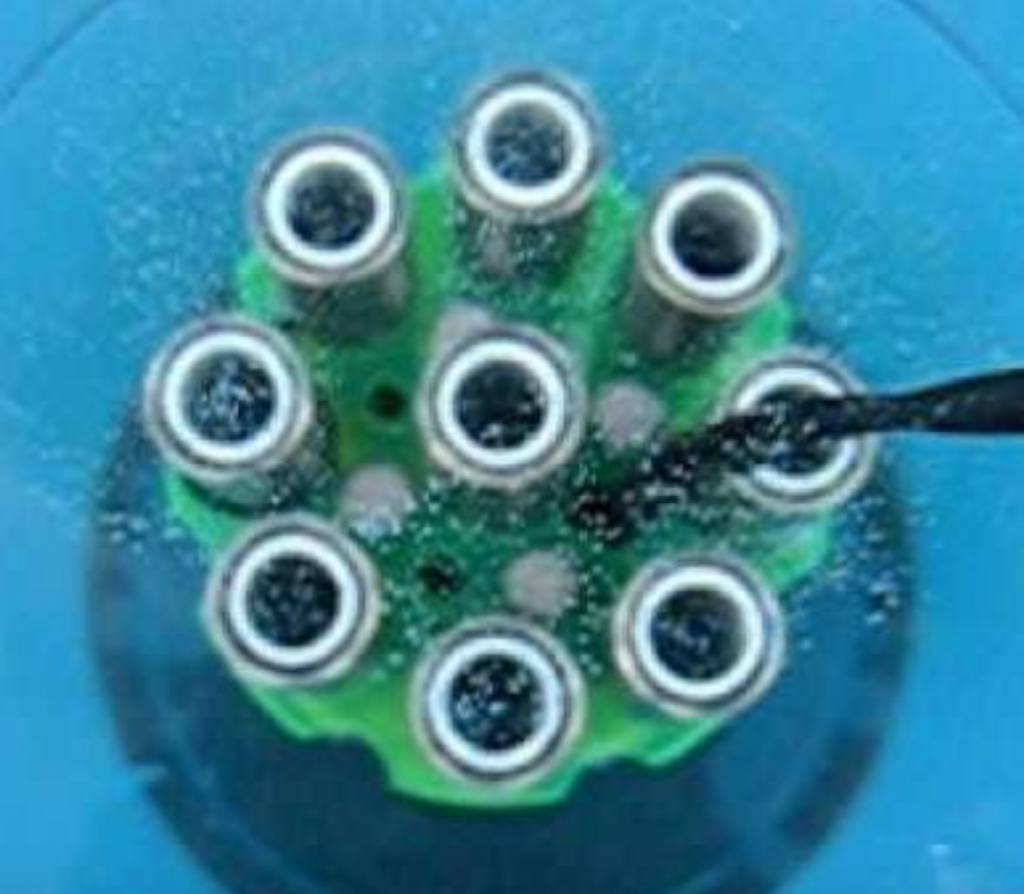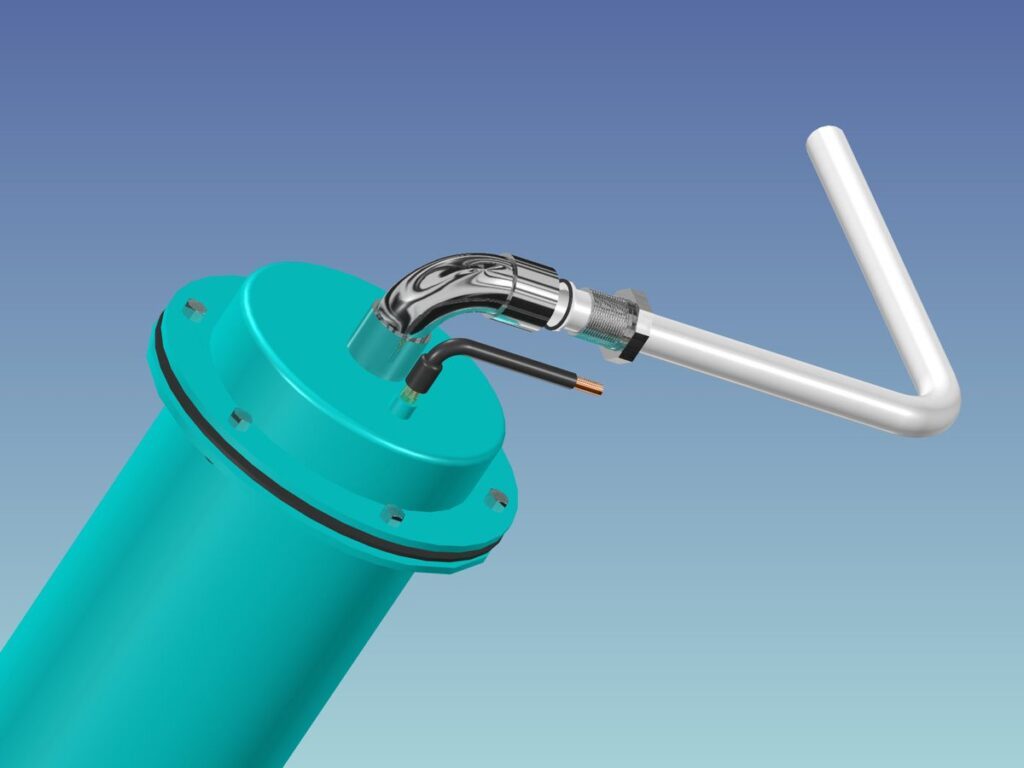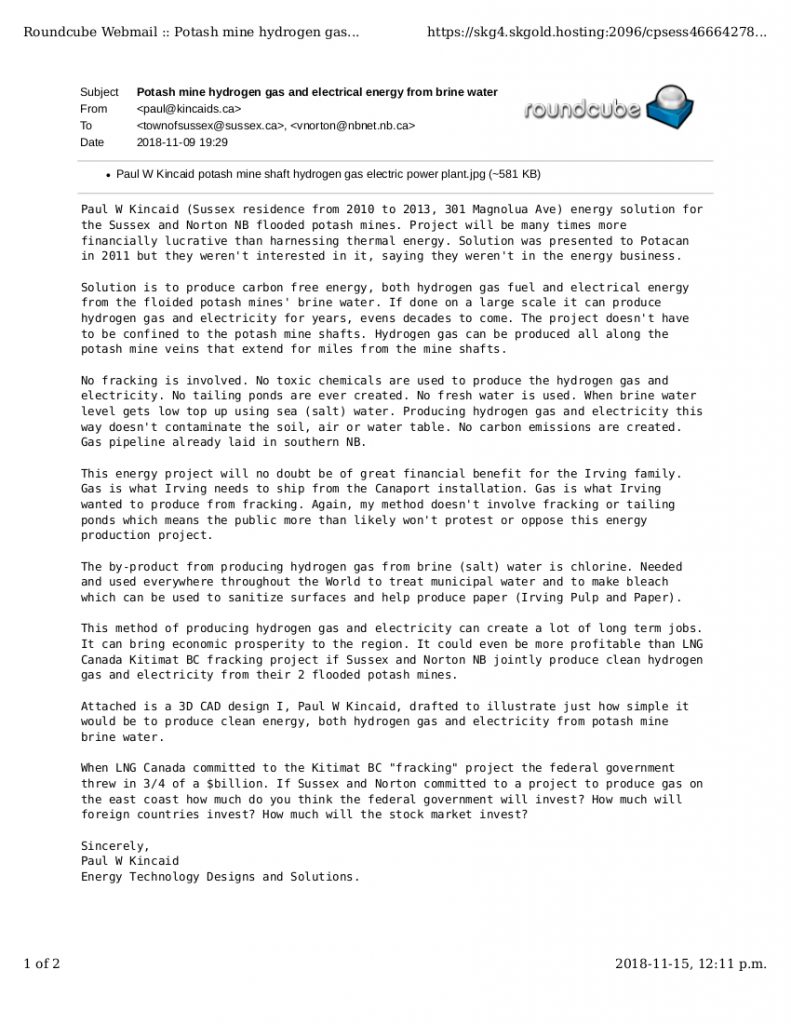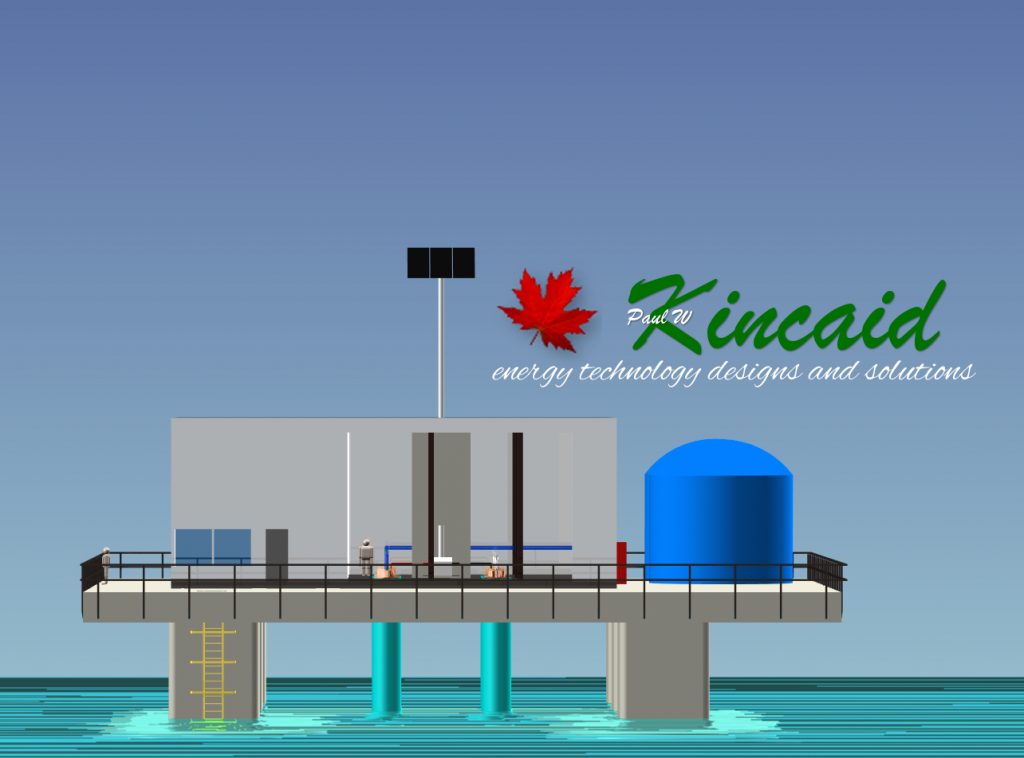Published on: Jun 6, 2023
New Brunswick Canada has the means & opportunity to produce hydrogen gas fuel and electrical energy indefinitely. Southern New Brunswick Canada could potentially become a major hydrogen gas electric energy hub. The clean energy project could potentially be worth $billions for the New Brunswick economy and create a lot of good long term jobs. No fracking. No chemicals used. No toxic tailing ponds. No pollution. Just clean hydrogen gas and electrical energy.
New Brunswick Canada is sitting on an energy gold mine. The energy that can be produced is hydrogen gas fuel. Hydrogen gas fuel can be produced from the existing flooded Sussex and Norton NB PotashCorp mine shafts to produce clean hydrogen gas fuel from the potash brine water. The hydrogen gas can then be used to fuel on-site gas generators and produce electrical energy or the hydrogen gas can be distributed throughout Canada and the US as fuel for vehicles, barbecues or home heating.
The above mage is a hydrogen fuel cell designed by Paul W Kincaid. It’s the primary hydrogen gas producing component for producing hydrogen gas for electrical energy generation from potash mine brine water.
Designs and project proposal was submitted to Irving Oil & the mayors of Sussex & Norton NB Nov 10, 2018. Sent them following email. No one responded.
Several hydrogen fuel generation stations could be built above the flooded underground potash mine shafts from Sussex to Norton NB. Because the potash mine shaft flooding will continue unabated hydrogen gas and electrical energy could be produced in New Brunswick indefinitely.
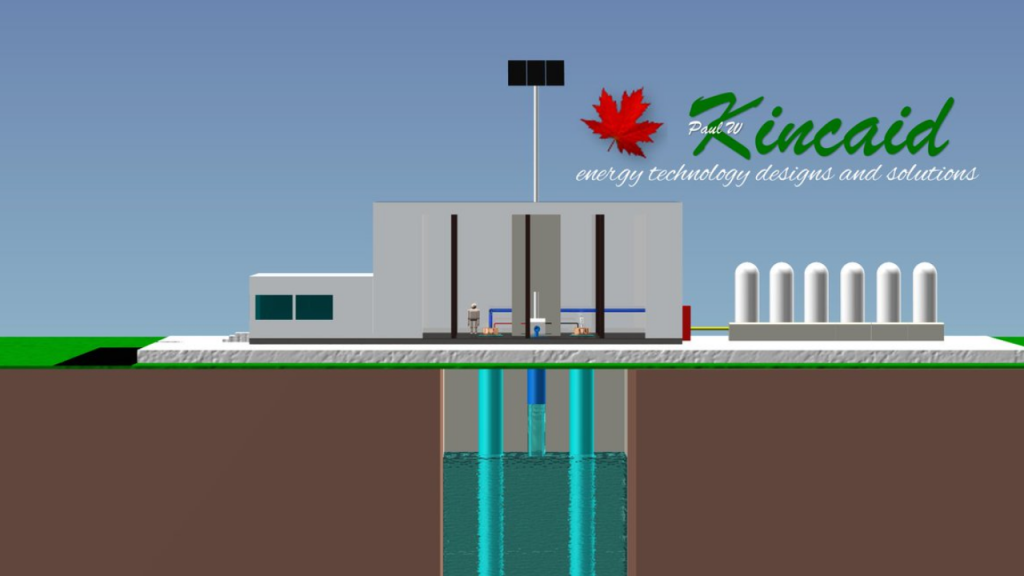
Hydrogen gas fuel can also be produced offshore in the Bay of Fundy or anywhere along Canada’s East Coast. Platforms can be built and towed offshore and used to convert seawater into hydrogen gas fuel using a simple method called electrolysis (cold fission).
In electrolysis of water a very small electrical current is passed between two electrodes submerged in water. Electrolysis of water will begin with a minimum of 1.2 volts and will increase in rate as the voltage is increased. Hydrogen gas accumulates at the cathode (negative electrode) and oxygen gas at the anode (positive electrode). Sources of electrical current that can be used in the electrolysis of water – car battery (12 volts) or a solar panel. Solar panels can be used on a offshore hydrogen gas platforms to produce hydrogen gas fuel.
In 2008 I produced the above video and posted it on YouTube Feb. 23, 2011 and on my websites to demonstrate just how easy it is to produce hydrogen gas from water. My H2O fuel cell was designed to use sea water. A custom made signal generator was used to split the water into hydrogen and oxygen. The signal generator was powered by just 4.5 volts.

